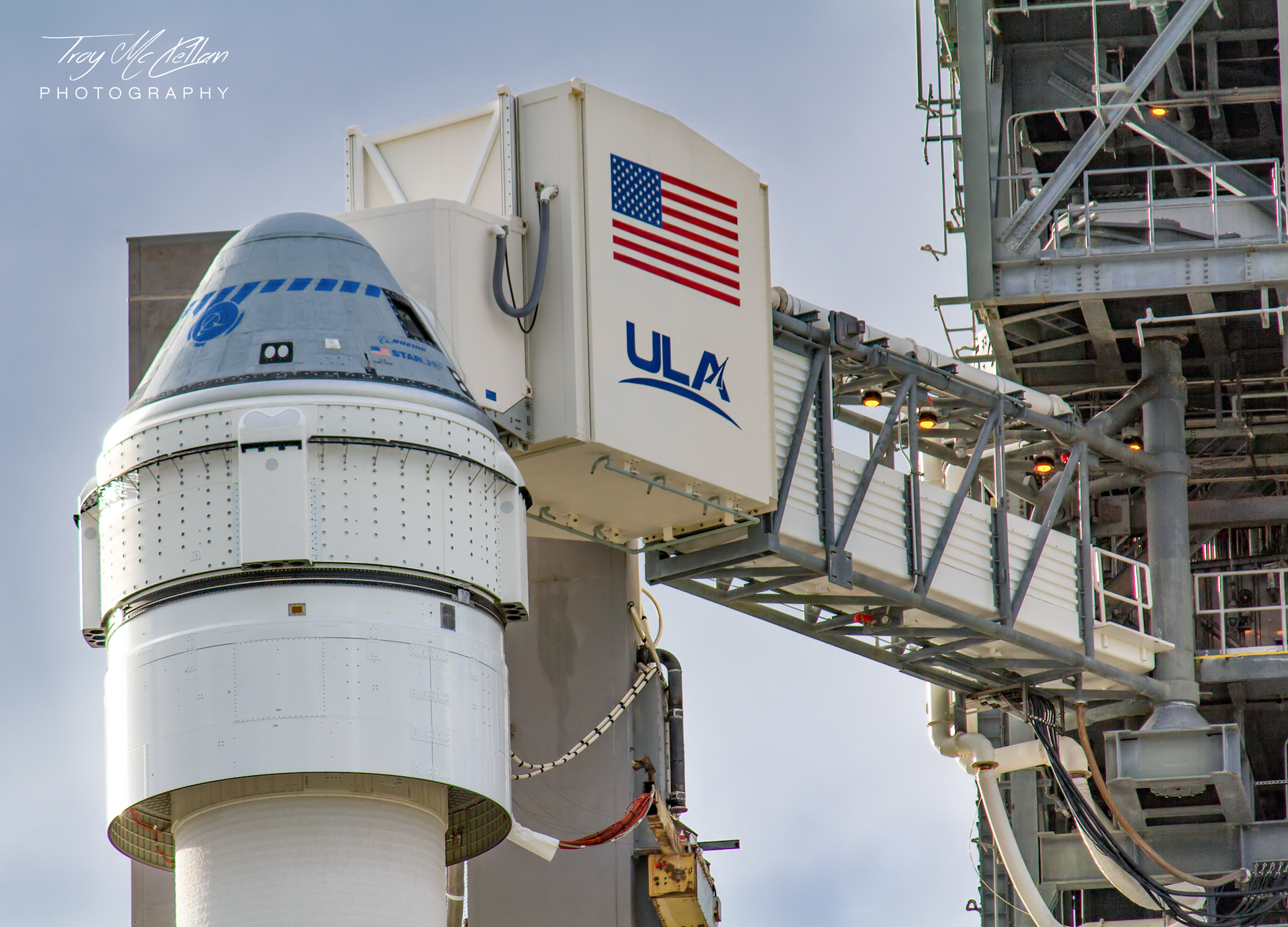
After a decade in development, Boeing stands ready for the highly-anticipated un-crewed Orbital Flight Test (OFT) of its CST-100 Starliner on Friday, 20 December. The conical spacecraft—whose design bears more than a passing resemblance to NASA’s Apollo Command Module (CM)—will rise from Space Launch Complex (SLC)-41 at Cape Canaveral Air Force Station, Fla., at 6:36 a.m. EST, to kick off a week-long mission to the International Space Station (ISS).
Its flight will provide “real (off)-world” experience for this second of two Commercial Crew vehicles that will begin ferrying astronauts to the space station as soon as mid 2020, and will mark the first flight of a human-capable vehicle aboard a “Mighty Atlas” since Project Mercury astronaut Gordon Cooper’s Faith 7 mission, way back in May 1963.
Watch LIVE COVERAGE beginning at 5:30am EST
“This test flight will give us valuable data about Starliner’s performance in the actual environment through each phase of flight, and demonstrate its capability to transport crew to the space station and bring them home safely,” said Trip Healey, NASA’s mission manager for OFT. “Being on the cusp of this huge moment in history is really exciting.”
Fifteen feet (4.5 meters) wide at the base and standing 16.5 feet (5 meters) tall, including both its habitable crew module and unpressurized service module, the 29,000-pound (13,000 kg) spacecraft is the legacy of a concerted effort by NASA to court commercial entities for ISS crew transfer capability aboard U.S. spacecraft, launched aboard U.S. boosters, and from U.S. soil, following the 2011 retirement of the Space Shuttle fleet. Both Boeing’s Starliner and SpaceX’s Crew Dragon—first flown in March 2019—were awarded contracts to ensure regular crew access to the ISS through the next decade.
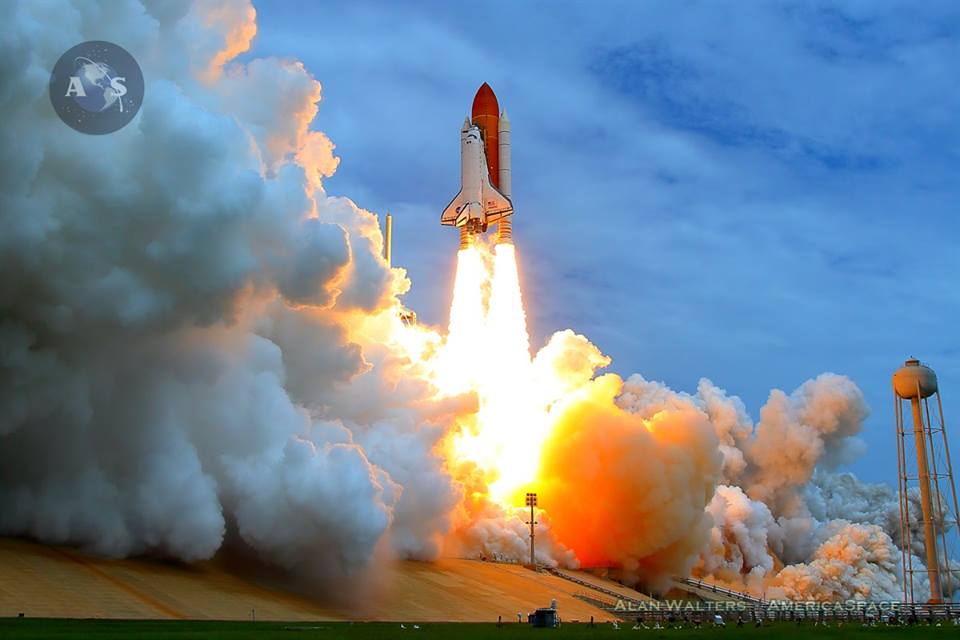
And Boeing sees its role encompassing something larger than an ISS crew transport; rather, as a facilitator of other commercial options, with CST-100 Starliner seats reportedly available to private individuals, non-government organizations and federal agencies other than NASA.
Boeing’s relationship with Commercial Crew extends back a full decade. In 2010, the company began maturing its CST-100 design under an $18 million Commercial Crew Development (CCDev) Space Act Agreement (SAA) with NASA. And by April 2011, Boeing received $93.2 million in CCDev Round 2 funding to develop a spacecraft advertised as being capable of ferrying up to seven souls or a mix of people and payload to the ISS for seven months at a time.

It drew its name from being a “Crew Space Transportation” vehicle with the ability to push far beyond 100 km, the famed “Kármán Line”, traditionally and almost universally accepted as the edge of space. In August 2012, Boeing was awarded $460 million in third-round Commercial Crew integrated Capability (CCiCap) funding and in September 2014 received $4.2 billion as a Commercial Crew transportation Capability (CCtCap) finalist with SpaceX.
As the CST-100 progressed through these funding cycles, the target launch date for its inaugural missions inexorably slipped to the right. First expected to fly in 2014 and reach fully operational status the following year, by the time of the CCiCap award the date for its first mission had slipped from 2016 to no sooner than mid-2017, then 2018 and eventually 2019. Congressional funding shortfalls—which earned the ire of NASA Administrator Charlie Bolden—contributed to an unwelcome decision to court Russia for more seats on its Soyuz space vehicles to ensure that U.S. access to the ISS did not lapse. As part of the CCtCap award, Boeing was promised at least two and as many as six CST-100 missions and in May and December 2015 the first two flights were formally awarded by NASA.
By this time, the astronauts were already in place. In December 2011, former NASA astronaut Chris Ferguson—veteran of three space missions, including command of the final Space Shuttle flight—joined Boeing as its new director of Commercial Crew Interface. In this role, Ferguson carried significant oversight of crew integration and operations, as well as leading the development of system concepts and technologies for the up-and-coming ship. In February 2014, he (virtually) returned to space at the controls of the CST-100 simulator to perform manual activities, including on-orbit attitude and translation maneuvers, a docking and undocking from the ISS and a fully-manual re-entry back into Earth’s atmosphere.
In mid-2015, veteran NASA astronauts Sunita Williams, Eric Boe, Doug Hurley and Bob Behnken were named to a Commercial Crew “cadre”, detailed to begin generic training both on the CST-100 and Crew Dragon vehicles. As the target launch date for the first mission seemed to stretch ever further into the future, it came with much fanfare in August 2018 when the first crew assignments were made.
Boe would join Ferguson and “rookie” NASA astronaut Nicole Mann on the first CST-100 mission, then planned for August 2019 as a two-week “shakedown” flight to the space station. But as their launch date moved towards the end of the year (and with increased likelihood that they might not fly until 2020), NASA opted to extend their flight to a full six months. In January 2019, Boe was removed from the crew due to a temporary medical issue and replaced by veteran astronaut Mike Fincke.
Last month, a successful pad abort test of the CST-100 was conducted at White Sands Missile Range in Alamagordo, N.M., in which the Launch Abort Engines (LAEs) and Orbital Maneuvering and Attitude Control (OMAC) thrusters—punching out a combined 190,000 pounds (86,200 kg) of thrust—were utilized to deliver the spacecraft across a distance of almost a mile in less than 20 seconds. It then deployed its forward heat shield and parachutes, before the service module and crew module separated, as planned. The crew module then descended under parachutes to a smooth landing. The entire test, from ignition through touchdown, lasted just 95 seconds.

Any spacecraft, of course, needs a rocket and in August 2011 Boeing selected ULA’s versatile Atlas V. NASA had earlier contracted with ULA to develop an Emergency Detection System (EGS) for the booster as part of early efforts to “human-rate” it for the CST-100. Initial plans called the the Atlas V to fly in its never-before-used “N22” configuration, equipped with no payload fairing, two solid-fueled rocket boosters at its base and a Dual-Engine Centaur (DEC) upper stage. Already certified for complex NASA exploration missions and critical Air Force and National Reconnaissance Office (NRO) payloads, the Atlas V was a clear front-runner as ULA was able to priovide a wealth of design implementation, detailed system and subsystem analysis, qualification, certification and flight data.
Unlike the single-engine Centaurs previously flown on the Atlas V, the performance characteristics of the DEC are expected to “flatten” the CST-100 Starliner trajectory to afford a safer re-entry environment for the astronauts in the dire eventuality of a launch abort. The DEC was used by earlier incarnations of the Mighty Atlas for decades and saw its most recent flight on the final voyage of the Atlas IIAS in August 2004. The transition to the higher-performing Atlas V meant only a single-engine Centaur was ordinarily required. With two Aerojet Rocketdyne RL-10A-4-2 engines, the DEC will produce 44,600 pounds (20,230 kg) of propulsive yield in a single “burn” with a limited acceleration rate to manage the G-force experienced by the crew.
And unlike previous Atlas V configurations, the CST-100 includes no payload fairing, which produced its own aerodynamic challenges. In late 2016, following several further wind-tunnel tests, a final configuration of the booster was unveiled. It includes a cylindrical “aeroskirt”, located directly aft of the CST-100 Starliner’s service module, to bring aerodynamic stability and loads margins within acceptable flight levels. Should an abort occur during powered flight, the aeroskirt will help with venting and guard against over-pressurization if the CST-100’s abort motors are fired.
Wind tunnel testing of the CST-100/Atlas V combo got underway during the latter phase of CCDev-2 and by April 2013 the Launch Vehicle Adapter (LVA) to link the two together was put through its own extensive evaluations. Hensel Phelps was selected to assist with the design and development of the crew access tower and crew access arm, as well as the emergency egress system, which wrapped up its final qualification tests in April 2017. Situated on Level 12 of the crew access tower, some 172 feet (52 meters) above the SLC-41 surface, in the event of a pre-launch contingency, the emergency egress system will carry the astronauts to a safe ground landing about 1,340 feet (400 meters) from the pad.
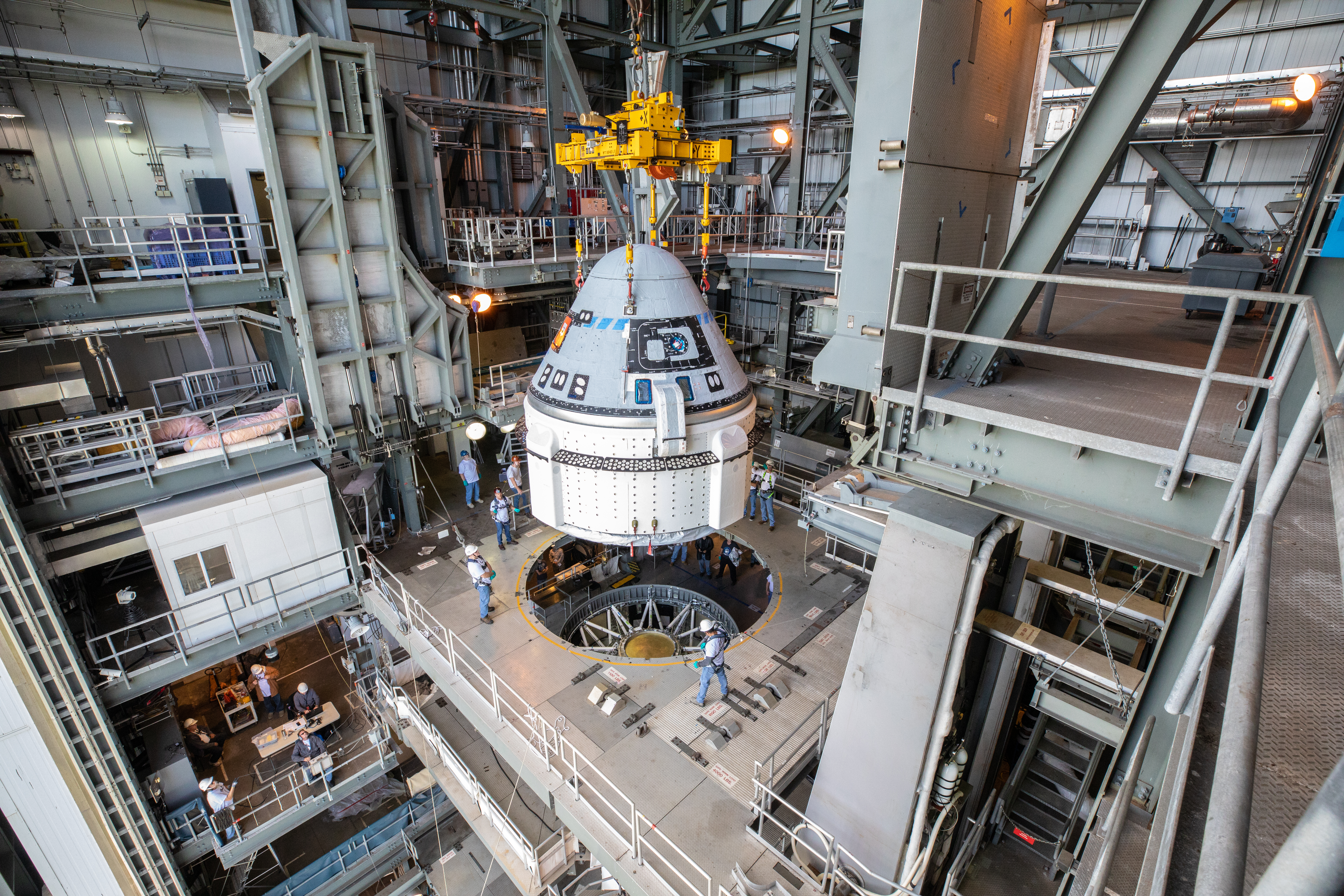
Last month, the first CST-100 was mounted atop the Atlas V inside the Vertical Integration Facility (VIF) at SLC-41. The spacecraft had been readied in the Commercial Crew and Cargo Processing Facility (C3PF), the repurposed Orbiter Processing Facility (OPF) Bay 3 from the bygone Space Shuttle era. Launch was originally scheduled for 17 December, but slipped to the 19th and eventually 6:36 a.m. EST on the 20th.
The 172-foot-tall (52-meter) booster was rolled from the VIF to the pad this morning under dreary skies. The Launch Readiness Review (LRR) was conducted by ULA OFT Launch Director Bill Cullen on Tuesday, 17 December, and produced no issues of concern. Officials from ULA, Boeing, NASA and the Air Force declared their readiness to support launch and signed the Launch Readiness Certificate.
Weather conditions for Friday’s opening launch attempt stand at 80-percent-favorable, with low scattered clouds and winds a concern. “From Thursday into Saturday, the pressure gradient remains tight, with strong high pressure over the Mid-Atlantic and low pressure over Cuba,” noted Launch Weather Officer Jessica Williams of the 45th Weather Squadron. “With sustained onshore flow through Saturday, cumulus clouds are expected to be moving onshore with a slight chance of a brief shower.” Conditions on Saturday are predicted at 70-percent-favorable, with slightly higher moisture and wind speeds increasing the threat of a weather violation.
Four minutes and 35 seconds after Friday’s liftoff, the 107-foot-long (32-meter) Common Core Booster (CCB) of the Atlas V will separate from a rapidly ascending stack. Ten seconds later, the DEC will ignite at an altitude of about 69 miles (111 km) and burn for around seven minutes to insert the CST-100 into a suborbital trajectory with an apogee of 112 miles (181 km) and a perigee of 45 miles (72 km), inclined 51.6 degrees to the equator.
The CST-100 will then separate from the Centaur and commence a 15-minute burn of its OMAC engines to achieve a stable orbit. Current plans envisage an automated docking at International Docking Adapter (IDA)-2—situated on the forward end of the station’s Pressurized Mating Adapter (PMA)-2—at 8:08 a.m. EST Saturday, 21 December.
Laden with 600 pounds (270 kg) of supplies and equipment for the incumbent Expedition 61 crew, the CST-100 will be accessed on Sunday and unloaded. Those supplies include food, radiation monitoring equipment and the heavily instrumented crash-test dummy, “Rosie”, wearing the new “Boeing Blue” space suit.
For Boeing, the key objectives for the mission include demonstrating the integrated system performance of the CST-100 Starliner, the performance of the NASA Docking System (NDS), the performance during re-entry and landing, the performance during recovery operations and the performance of the launch, flight and recovery teams. The spacecraft is slated to undock and execute a parachute-assisted landing at White Sands Missile Range early on 28 December.
It is expected that only 4.5 hours will elapse between undocking and landing, with just 40 minutes between the deorbit “burn” and reaching the ground. Following its return, this particular CST-100 Starliner will be reflown for the second crewed mission, with NASA astronauts Sunita Williams and Josh Cassada, currently anticipated early in 2021. Under normal circumstances, around 4.5 months “in the factory” are expected in order to turn individual Starliners around to repeat missions.
.
.
FOLLOW AmericaSpace on Facebook and Twitter!
.
.




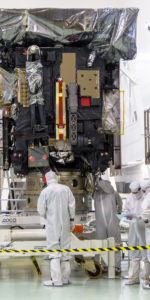
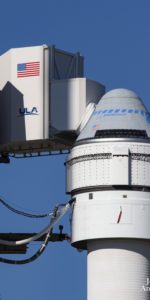
It says ‘first maiden’ flight. Isn’t that an oxymoron? It should be one or the other, not both, surely.